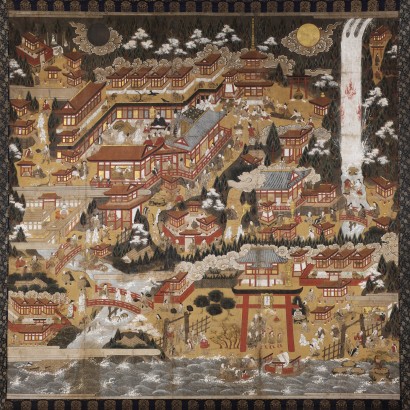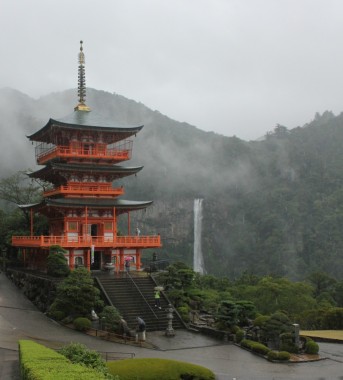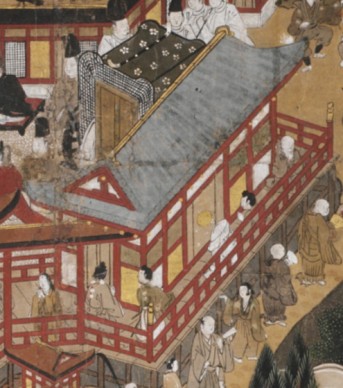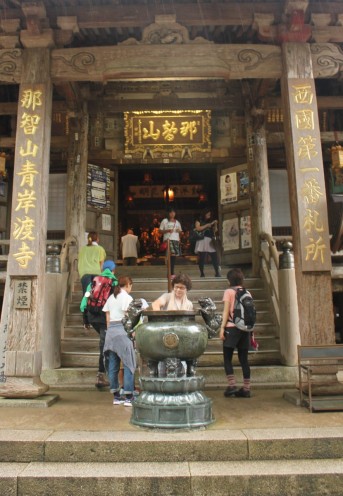Japan, Edo period, 16th–early 17th century; hanging scroll, ink, colors, and gold leaf on paper, 59 x 59 1/2 in.; The Frances Lehman Loeb Art Center, Vassar College, Pratt Fund and Betsy Mudge Wilson, Class of 1956, Memorial Fund, Purchase, 2004.10.
Devotional and promotional in intent, this monumental painting shows a panoramic view of Nachi, a local Japanese manifestation of Kannon’s Pure Land and the first stop on the Saigoku Pilgrimage. Following a pilgrim couple dressed in white, we are invited to enter the sacred complex from bottom right, where devotees depart in boats for Kannon’s paradise in the southern sea. Our journey continues to the great waterfall, then to Nachi Shrine, and ends at top left where Mount Myoho symbolizes Amitabha Buddha’s Pure Land. Please take a closer look at the elaborate details before you move on. In addition to Buddhist references, you will find various Shinto shrines, local Kumano cults, and vignettes from classic literature, indicating an integration of Buddhism and indigenous Japanese culture. MD







